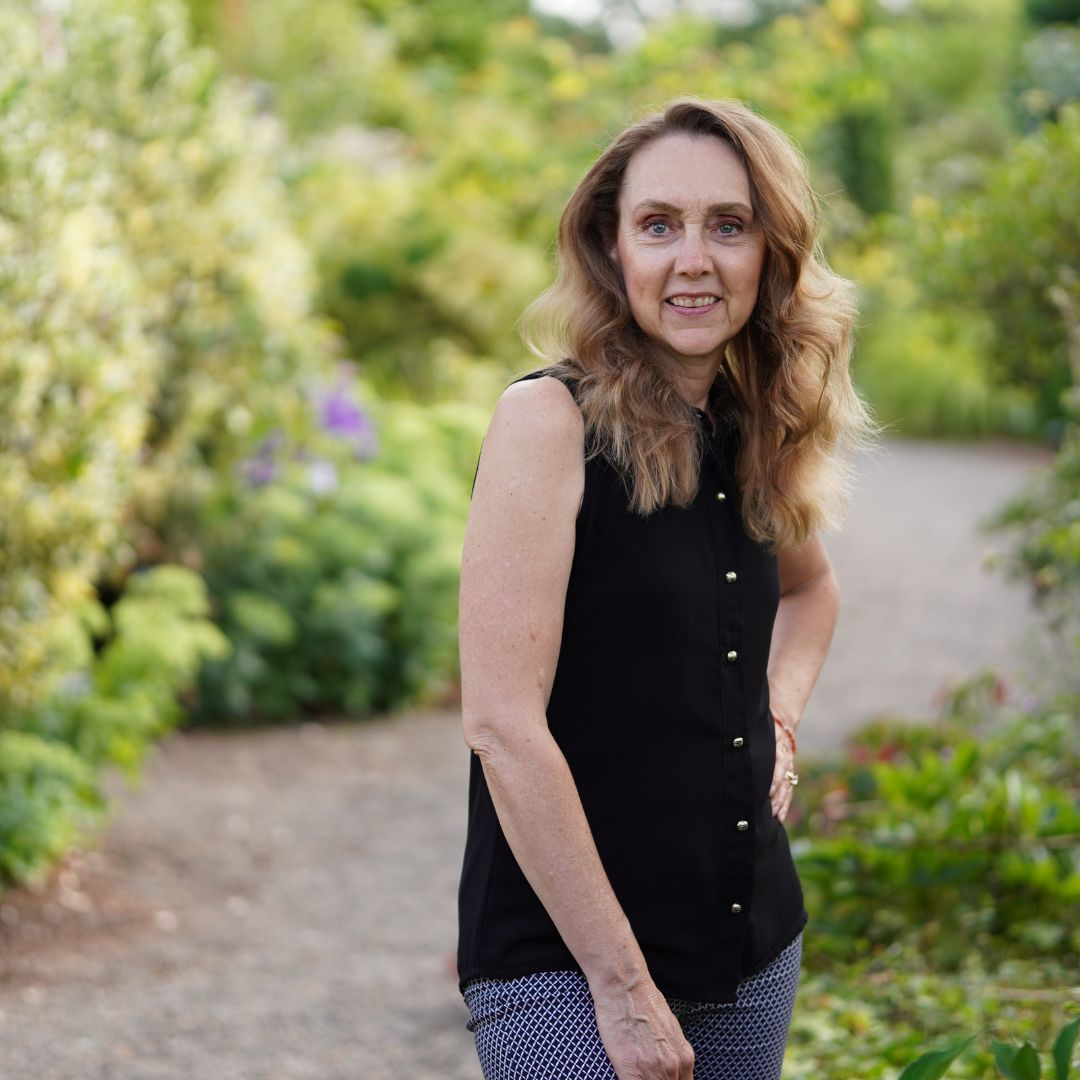Self-care. Life balance. Wealth building.
What do all three of these have in common?
I believe they all become slightly out of whack in midlife.
I’ll use myself as an example.
See, I was chugging along just fine in 2019, thinking I had my life all figured out. I was writing books, creating a plan, and living the dream. (My dream anyway.)
Then 2020 hit.
I was involved in a shooting. A loved one was diagnosed with cancer. A pandemic swept across the world.
Things went downhill from there.
I’ve practiced resilience for a very long time. Maybe that comes from being a business owner for so long. With several businesses behind me, more ups and downs than I could possibly count, I looked at each new day as, well, a new day. I really do take things in stride, learn, grow, and get right back up and do it all again.
But even I was struggling as we moved into a new year. Was it me? Were there others? So, of course, I started looking for answers.
Where is the value?
“I’ve been doing this for thirty years. I’m tired of it. I’m looking for something else.”
“My boss didn’t get me. His demands were too much. I couldn’t keep up with my family and work commitments. So I found a new job with more flexibility.”
“I’m starting a new business. I was let go in the pandemic, and when I started looking around, I figured I could freelance for the same salary. I’ve picked up a handful of clients, and it allows me to be there for the kids. They’re struggling too, so it works for me.”
Thanks to the internet, I’ve connected with a lot of like-minded women these past few months. A while back, I started noticing a trend.
Men are consistent with their careers: go to college, get a job, get promoted, move to another company, get promoted. Upwards until they retire.
Women, not so much. It looks more like this: go to college, get a job, get promoted, stay home with the kids, work part-time, change careers, get promoted, quit to care for aging parents, start a business, change niches, go back to school, find something new …
Does that look familiar to you?
You’re not alone. I meet women daily who have made significant career changes as she moves from her twenties and thirties, to her forties, fifties, and beyond. Sixty is the new fifty – I have spoken to tons of women who are building new businesses and careers in their sixties, seventies and eighties. Gloria Steinem said it best: Women may be the one group that gets more radical with age.
I think we thrive on change. (Even if we say we despise it.)
But this has a cost. While mens income rises steadily throughout their careers, womens bounces around from year to year.
And that shows up in our retirement savings.
A recent study found that while 47 percent of men between the ages of 55 and 66 have no personal retirement savings, it rises to 50 percent for women.
We even save differently. The same study found that 30 percent of men have more than $100,000 in a retirement savings account compared to a mere 22 percent of women.
If you’re not prepared for retirement, it’s going to add stress to your life. And that growing stress will impact your health.
A Health and Retirement Study found that people who had growing wealth from the age of 64 and up had lower cardiovascular risk than people in the same group who had stable or declining wealth.
Yep. They say money can’t buy happiness. But if you aren’t adequately prepared for your retirement years, it will show up in your life in multiple ways.
Why it’s not too late for building financial empowerment
I recently read an article on Gen X’s approach to marriage. We’re more cynical about society and authority, and are more likely to believe career change is a good thing in our lives. We’re also more likely to have divorced parents, and are the first generation to think of that as “normal.”
We responded to this by taking our time choosing mates and deciding on marriage. But once we commit, we hold on, creating higher rates of stable marriage than our Baby Boomer parents. Statistics show that 70 percent of marriages that started in the 1990s were still strong after fifteen years, with marriages in the 2000s even higher.
As women, we experience it all.
- We’re more likely to have gaps in employment, insurance, and pensions.
- We’re more likely to stay married and (somewhat) dependent on our husbands.
- We’re more likely to face the world on our own after midlife.
- We’re also more likely to have financial insecurity.
All that adds up to big potential problems as we age.
Rather than find yourself as one of the statistics, let this be your wakeup call to financial freedom, empowerment, and building a lifestyle that gives you a more healthy approach to living.
Be proactive with your financial empowerment
There are two separate levels when it comes to women and financial empowerment.
- Some women leave it up to their spouses. They aren’t proactive because they haven’t had to do it by themselves.
- Some women just aren’t interested. They rely on their partners and have no intention of learning.
You’re here, so I’m betting you fall into the first.
A few years ago, I had a wakeup call that taught me the importance of women’s financial empowerment.
Look, this is more than “I want a million dollars” or “having a million dollars in the retirement account.” Whether you currently have that or not, this is much more about understanding where you now stand, and what the journey will look like as you age.
We all hear that we should avoid mornings at Starbucks and bring a sack lunch from home. But right here in midlife, financial freedom means a whole lot more.
Unlocking financial freedom is not about having a “million dollars.” This is about knowing how your financial outlook plays into your life from today forward.
Even if you’ve never felt financially savvy before, that doesn’t dictate how you look and deal with your finances from this point forward. If you have a goal to be happy and healthy for years – decades – to come, the best place to start is right now.
How this journey starts
Where do you start? Financial freedom is a huge goal for many women in midlife. But the biggest mistake I see women making is not defining what that truly means. Where will you begin? What does the path look like? This isn’t a one size fits all.
It’s a journey, not a destination.
If you follow the news at all, you’ve probably seen the chatter about Congress changing the retirement rules over the next ten years. This isn’t new. They’ve been talking about this for years. The system wasn’t meant to support the number of people currently using the retirement systems for as many years as they’re collecting. It’s causing discrepancies, and it’ll eventually reach an end. (As Gen Xers start hitting the retirement years.)
That’s why it’s more important than ever to come to terms with what this will mean for you.
As an entrepreneur, I’ve had to use the US healthcare exchange to buy my insurance. I’m never sick and rarely use traditional medicine, so I use the bottom insurance plan, which for the past few years has run about $1200 per month, with an $8500 deductible.
The cost alone is enough to make you cringe. But it gets worse.
Today’s health insurance plans aren’t about wellness, they are designed for sickness. When I wanted a vitamin D test to check my levels, my primary physician wouldn’t give me one. I was on my own. I found a resource, and happily paid for it myself.
My insurance also pays for a handful of chiropractic visits … with an $80 co-pay. Which basically means I pay for my chiropractic visits myself. How do they know I won’t need more? How can they know how many chiropractic treatments I’ll need without assessing my situation? It’s a mystery to me.
I read a comment on the site where I purchased my vitamin D test. A woman wondered, “why insurance doesn’t pay for these tests.” She couldn’t afford it without insurance, so she chose to forgo the test.
And I have a problem with that.
I’ve done considerable research into wellness, and what it will take to stay healthy for life. But when we pay an exorbitant amount for insurance that won’t help us stay healthy, it’s hard to justify either side.
We pay for insurance with the best intentions. Yet it doesn’t meet a healthy persons’ needs.
And if you don’t have the financial means to carve out your own experience, you’ll be left with what they dictate they choose to pay …
Financial empowerment puts you in charge of your journey
Financial empowerment puts you in charge of your journey in midlife.
The biggest question I’m asking these days is: How much do I need on a monthly or annual basis to be financially independent? To be able to choose what I do each day?
How much income do I need to cover my expenses, and where is that income coming from?
It’s all about cash flow.
It’s about knowing what’s coming in each month, where it’s going, and what’s the difference.
I remember very clearly days when I had to think twice about doing things for myself. A massage was out of the question. Looking for alternative solutions wasn’t an option because they always came with higher pricetags.
We’re on the cusp of creating better lives and better experiences.
But to make better choices, you have to have the finances to do it.
No matter where you are today, let this be your wakeup call to create a plan, even if it’s your very first one.


+ show Comments
- Hide Comments
add a comment